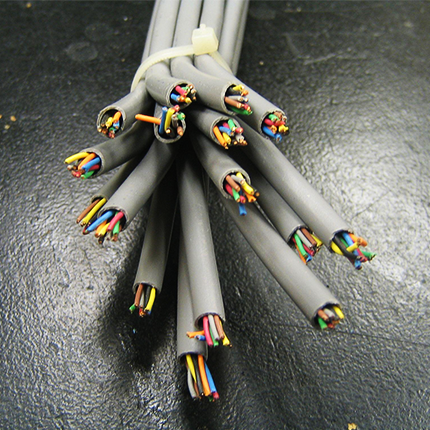Basically title.
I’m wondering if a package manager like flatpak comes with any drawback or negatives. Since it just works on basically any distro. Why isn’t this just the default? It seems very convenient.
1- It takes a lot of space. jUsT bUy a bIgGeR dRiVe --stfu I’m not going to spend money for you to waste it
1- a) Everyone assumes you’re an American with 20Gbps symmetrical fiber optic. My internet can’t handle 2+ Gb downloads for a fucking 50 Mb app bro
2- Duplicate graphics drivers. Particularly painful with Nvidia
3- It puts a lot of security work with distro library trees straight into the shitter
4- Horrendously designed system for CLI apps (
flatpak run org.whocares.shit.app)5- Filesystem isolation has many upsides for security but also it can cause some pain (definitely nitpicking)
Where in America is there 20Gbps symmetrical fiber? Everywhere I know tops out at 1gbps if you are lucky that your ISP isn’t shit, and lots of areas are still on slow cable.
In my area my options are 200mbps cable or 100mbps ADSL (which inexplicably costs more than the cable Internet)
Lived in 8 different states in the US - never had anything above 1 Gbps. Typically been 300-500 mbps, with only the past and current state state where I’ve gotten 1gbps. Poster is just assuming because we’re a first world country that we have good internet. We don’t. I hear Europe has better speeds than us.
All of this. Plus often it just doesn’t work.
And no. I do not want to blind fiddle with the permissions to fix it.
Yes, I love it and don’t get me wrong but there are many downsides and they all result from poor planning and/or bad decisions around how flatpak was built. Here are a few:
- Poor integration with the system: sometimes works against you and completely bypasses your system instead of integrating with it / using its features better. To me it seems more like the higher levels are missing pieces to facilitate communication between applications (be it protocols, code or documentation) and sometimes it is as simple as configuration;
- Overhead, you’ll obviously end up with a bunch of copies of the same libraries and whatnot for different applications;
- No reasonable way to use it / install applications offline. This can become a serious pain point if you’re required to work in air gapped systems or you simply want to level of conservation for the future - it doesn’t seem reasonable at all to have to depend on some repository system that might gone at some point. Note that they don’t provide effective ways to mirror the entire repository / host it locally nor to download some kind of installable package for what you’re looking for;
- A community that is usually more interested in beating around the bush than actually fixing what’s wrong. Eg. a password manager (KeePassXC) and a browser (Firefox/Ungoogled) both installed via flatpak can’t communicate with each other because developers seem to be more interested in pointing fingers on GitHub than fixing the issue.
Flatpak acts as a restrictive sandbox experience that is mostly about “let’s block things and we don’t care about anything else”. I don’t think it’s reasonable to have situations like applications that aren’t picking the system theme / font without the user doing a bunch of links or installing more copies of whatever you already have. Flatpak in general was a good ideia, but the system integration execution is a shame.
To the duplicate libraries
Do you know if flatpak leverages the memory side of this? With shared libs, you only keep one copy in memory, regardless of how many applications use it. Makes application launch faster, and memory usage lower.
For flatpak, it of course will load whatever it needs to load, but does it manage to avoid loading stuff across other flatpaks?
Thats a good question that came to my mind too, idk
Thanks for your comment! Both positive and negative for sure.
For me it’s lacking in user friendliness. Go easy on the downvotes if I’m doing it the hard way.
- Flatpaks aren’t really single-executables. You have to use to the
flatpakcommand to run them. - I can’t just say
flatpak run firefox, I have to use the full app-id which could be quite long.
Yes, I could make this simpler with scripts or aliases but how hard would it have been for Flatpak to automatically do this for me?
- Flatpaks aren’t really single-executables. You have to use to the
It’s HUGE. That’s the biggest downside for me. I’m always use a deb/native package first because they are way smaller.
Of course they are. they share dependencies with other software. flatpaks bundle all dependencies,which is great for sandboxing,even though some sort of break the rule and share some,they are still sandboxed.
Unless you “firejail” or “bubblewrap” your software, security is much better OOB for flatpaks.
That’s a myth. Security of flatpaks depends entirely on the given permissions, and since most flatpaks just set their own permissions on installation, or require filesystem access to work, there is no meaningful difference in security OOB.
Flatpak apps cannot set their own permissions “on installation”. If flatpak tells you some weather app uses only the network permission then that is all the app is going to get.
For an app to be able to change its own permissions, it first needs permission to the flatpak overrides directory. Any app that does this gets an “Unsafe” designation in gnome-software.
Also about most apps requiring filesystem access to work: I have 41 flatpak apps on my system (Silverblue so everything is flatpak). Only 6 have access to my home or Documents directory. (11 apps requested full filesystem or homedir permission, but 5 of these work perfectly fine after I turned off their permissions in Flatseal).
Notably, “large attack surface” apps like Thunderbird or Firefox don’t have access to my Documents. File uploads and email attachments go through the file picker portals.
It’s great for user apps, gui apps, and sandboxing. It’s terrible for cli apps, libraries, development, and integration.
deleted by creator
- overly verbose way to launch them in terminal
- can sometimess not even respect your gtk/qt theming
- sandboxing/permission system can lead to you trying to figure out which directory you need to give access to when you want to save file if it wasn’t preconfigured
- uses its own libraries and not system libraries, want to play the hit new AAA game with steam flatpak? get fucked it requires a mesa commit that was merged 8 hours a go and you’re stuck on 23.0.4 and can’t use the git release.
Flatpak probably has it’s specific uses like trying to use one piece of proprietary software that you don’t trust and don’t want to give it too much access to your system, or most GUI software clients having an easy way to install Discord on your Steam Deck (no terminal usage, Linux is easy yay), but native packages 99% of the time work better.
uses its own libraries and not system libraries, want to play the hit new AAA game with steam flatpak? get fucked it requires a mesa commit that was merged 8 hours a go and you’re stuck on 23.0.4 and can’t use the git release.
Can’t you just install a git snapshot of mesa in a flatpak and use that? Then it’d be an upside
The downside is having to do that manually. Kind of ruins the whole point of it. Flatpaks will remain out-dated until the maintainer has time to push it out. Forever behind.
There’s the
org.freedesktop.Platform.GL{,32}.mesa-gitruntime(?) so that seems wrong. What app always needs the latest snapshot mesa version anyway?According to the example, a hit new AAA title on steam might need it.
That doesn’t mean it constantly requires a mesa git snapshot.
Startup time and disk space.
I think its biggest weakness is also its biggest strength: isolation. Sometimes desktop integration doesn’t work quite right. For instance, the 1password browser extension can’t integrate with the desktop app when you use flatpak firefox.
That’s a good pint actually. A double edged sword for sure!
Some people don’t like it because it uses a bit more storage and can start a bit slower, (I think) they can’t be used for system packages, and I’ve also had some issues with theming
This should be pinned somewhere https://blogs.gnome.org/wjjt/2021/11/24/on-flatpak-disk-usage-and-deduplication/?ref=ypsidanger.com
Edit: the speed shouldn’t be a real issue. You may measure a difference but that’s not an issue as it was with snaps until they improved upon it.
Using flatpak on low end devices (like Linux phones), I can tell you from experience, the speed liss is noticeable. Specially for application startup. As is the resource overhead.
That’s a fairly good point. On mobile startup can be crucial because sessions are short in comparison to desktop where you have longer sessions and startup time is negligable (even the slow startup times of snaps could be ignored for e.g. a video editing session)
Low specs shouldn’t keep the community from moving into newer technology.
Precisely. I’ve been playing with Mobian on a One Plus 6 (works great) and while I really like the idea of using mostly sandboxed app much like things work on Android, right now it certainly negatively impacts the experience.
One thing I always wondered is whether libraries in memory would be duplicated or not. I have seen a lot of people talking about storage space which is cheap and shouldn’t really be the focus for desktops. But I haven’t seen anything about in memory usage.
Good question. With 16 GB RAM 8 haven’t seen RAM issues for normal stuff
Me neither but I if we’re considering having all but the core of the distro in Flatpacks, this policy might mean Linux becoming less accessible to more modest configurations.
Unless Flatpacks deal with it somehow like regular packages do. If two app packages contain the same library within (as opposed to packaged in a dependency), can Flatpack figure out they’re the same and share code memory between the two? For library packages with two apps depending on different versions of the same third party flatpack, does it assume the newer version can be applied to both, optimizing memory usage? If so, wouldn’t that break the premise of flatpacks?
Can I convince my autocorrect that flatpacks and flapjacks are different things?
Inquiring minds want to know.
- no OS level components
- duplicate libraries as some core apps (editor, filemanager, Desktop) cannot be flatpaks (yet?)
- old runtimes etc. dont force developers to keep them updated. Often thats because or 3rd party packagers though
- complicated packaging, I heard that the Flatpak builder is better for certain languages.
- theming issues I heard (on Fedora Kinoite Wayland it just works, and I can also force themes per app)
- bad permissions by default (best we have though)
- bad run commands (this could easily be fixed, and I have a script for it)
For OS components / packaging every part, Snaps may work, but for GUI apps they seem subpar and nobody really cares.
Nix may be way better for installing just anything compartimentalized, but there is no permission system (thats why packaging is easier).
But Flatpaks are really great overall, Bubblewrap, KDE Settings / Flatseal, Portals, official app support. Its really really important.
Why isn’t this just the default?
One may notice that for every new method, the old ways stay around, possibly forever. It is not the default because there were things that worked prior to flatpak. The distros that from before flatpak have likely added the capability, but won’t likely change their default for another decade, or more.
I’ve had my first downside with flatpak.
VSCode’s flatpak version won’t let you use certain packages because they’re installed on the system and flatpak is a sandbox with no access. You need to enable some stuff but I’m far too lazy to troubleshoot that shit.
I got the Snap version so I’m ready for the hate.
Yes. That’s quite a downside actually!
In Gajim flatpak too, plugins only can be used if packaged for Flatpak.
I use the ssh plug in to connect with local.
It ruins single source of truth for apps and their installed state. It hides installed state from standard enterprise tools.
That seems like a shortcoming in those tools, that I’d expect them to fix as Flatpaks are pretty commonplace.
deleted by creator
Flatpak is a distro on its own, but with original dev support. Its like a Linux Distro replacing others.
So it adds complexity but with the potential to remove it from the OS. For example Libreoffice, Browsers, Thunderbird etc are huge and its a good approach to use official versions here.
Then what’s the point in having different distros lol we don’t have duplication for the sake of duplication there are reasons why there are different distros, philosophies and packaging method. I see this mistake from many usually newer Linux users, there are different distros because there is a point in packaging the OS differently.
Flatpak for example completely abandons makig apps use patched system libraries. Or having different packages for different init systems. Or , god forbid, supporting BSDs
I dont know tbh. Flatpak is a bit like Android apps I think, but those apps only have a single OS to support.
IMO yes but it might not be an issue for you, flatpaks work like windows standalone executables where each app brings all their dependencies with them, the advantage is the insane stability that method provides, the downside is the huge size the app will ultimately take, flatpaks are compressed and they don’t really bring all their dependencies with them (because they can share runtimes) but the gist of it is a flatpak is usually much heavier than a system (.deb .rpm .PKG) package.
If you are ok with tweaking I recommend nix pkgs as they work on any distro and only take slightly more space than system packages. I have a terrible connection and low disk space, flatpaks aren’t something I can use on the long run.
Oh and if you’re wondering flatpak >>>> snap > appimages (IMO)
flatpaks work like windows standalone executables where each app brings all their dependencies
No thats appimage. Flatpaks run on shared libraries and even different runtimes containing the same packages share those using deduplication
https://gitlab.com/TheEvilSkeleton/flatpak-dedup-checker
A Flatpak is exactly as heavy as a system app, just that on the system you already have some libraries installed.
Initial download size is bigger, okay. And in general more downloads, I guess the deduplication happens on the disk.
Its like, shared runtimes but also not. Its a bad situation tbh.
flatpak >>>> snap > appimages
I didn’t know we were ranking the horsemen of the apocalypse. Leave room for shitty supply-chain victims like cpan/composer/npm and other irresponsible shortcut tools that throw security out the window.
In the case of NPM (don’t know enough about the others) it’s not a general purpose package manager, it’s only for node related packages.
And yes I think ranking them is relevant Appimages are pretty terrible security wise(let’s download random executables on the internet yayyy!), snaps are getting better but used to be really terrible and to be fair NixPkgs aren’t that safe either.
Flatpaks are pretty secure, they work well, the stack is fully open source and allows you to host your own flatpaks repos, as well as manage sandboxing parameters. If only they were lighter I could easily see them become the “Linux executable format”
I think using AppImage like Flatpak is silly. It is perfect for keeping some programs on a USB drive for example, but not as a way of installed software.













